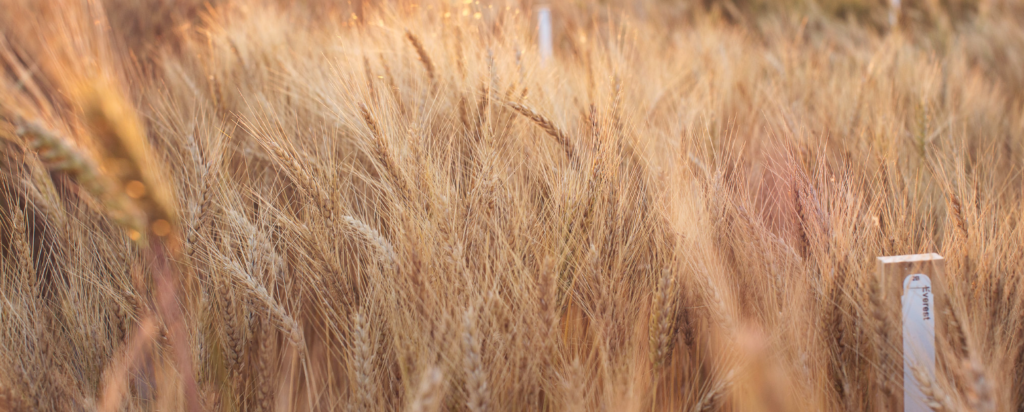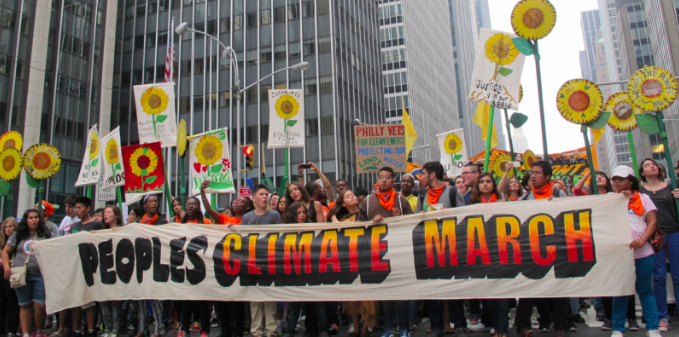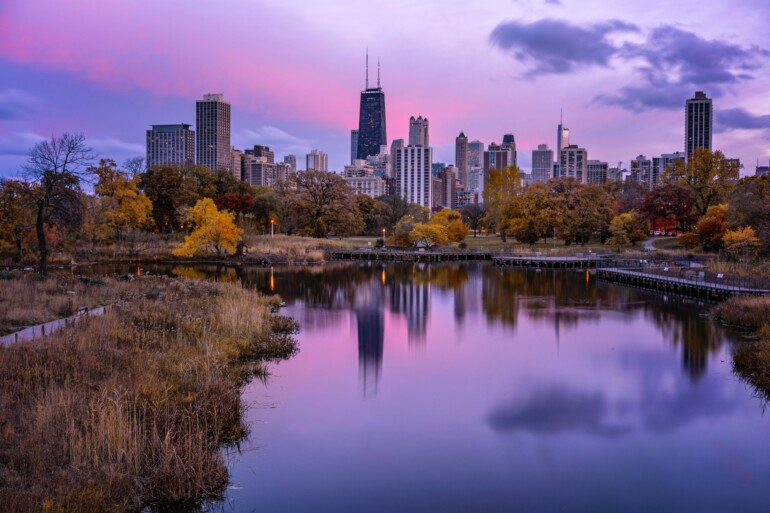Protecting the planet for future generations is a cause we all have a responsibility to support. The threats posed by climate change can be overwhelming, but experts remain hopeful that our environment can still be healed. In honor of Earth Day (April 22), we’re highlighting individuals and organizations — in Chicago and nationally — that are focused on fighting the climate crisis, providing solutions and promoting sustainability. Do your part for the planet by supporting these organizations during Earth Month and beyond.
How To Help
Metropolitan Planning Council
View this post on Instagram
Since 1934, the Metropolitan Planning Council — a nonprofit planning and policy organization that works to create a more equitable and sustainable Chicago region — has been working on behalf of our local ecosystem, among many things.
Over the years, MPC has instituted programs in the city to champion social needs such as access to housing and transportation, but more nuanced than that, other tiers to their mission include making waterways more equitable, inhabitable and accessible to community members. Which is why they were one of the organizations to spearhead the Our Great Rivers project — which brings together local government and supporters to create a more inviting and productive Chicago waterway.
To find out more about the stellar social, policy and environmental programs they have been running for nearly 100 years, visit the Metropolitan Planning Council.
Chicago Parks Foundation
View this post on Instagram
One of the many attractions of Chicago is the diverse public park system made up of over 600 open spaces. In partnership with the Chicago Park District, Chicago Parks Foundation — an independent 501c3 organization — serves as a collaborative and accountable local resource that anyone can trust, from park goers to local government officials.
“Our goal is to help park users and lovers become park givers and stewards. We bring community ideas to action, raising funds and awareness for park projects throughout our city.” This corner of conservation is crucial, but not doable without the hard work of volunteers who want to give back to the city. From cleanup crews to raising funds, the Chicago Parks Foundation needs your support — visit them online for more.
Friends of the Chicago River
View this post on Instagram
Above all else, Friends of the Chicago River wants Chicagoans to know that the river is not the same sludge pond of lore, but rather, after years of work, it is a thriving ecosystem unto itself. Since 1979, FCR — a nonprofit organization — has labored to improve and protect the Chicago River system for all living things via water and habitat cleanup. During that time, they’ve instituted programs such as an annual Chicago River Cleanup Day, which saw over 2,000 volunteers in 2022. Find more details on how you can join their clean up crews, raise awareness and donate to their cause at Friends of the Chicago River online.
Citizens for Conservation
View this post on Instagram
This volunteer-based nonprofit has made a pledge to “saving living space for living things” in Illinois. Located in Barrington, the group is responsible for restoring and maintaining over 777 acres across 14 separate locations. Their work hinges on three concepts: Protect, Educate, Restore. Through this, they are able to uplift what already exists and prepare the next generation of conservationists, specifically through their award-winning Youth Education classes.
From water health preservation to reforestation efforts, from controlled burns to the removal of invasive species, CFC meets a wide range of needs in our local wildlife. To assist them as they diligently work — on their own time — to save our environment, consider signing up for volunteer positions, become an annual member or send a financial donation. Details on the Citizens for Conservation site.
Climate Justice Alliance
View this post on Instagram
Climate Justice Alliance was formed in 2013 to “create a new center of gravity in the climate movement by uniting frontline communities and organizations into a formidable force.” Through their “translocal organizing strategy and mobilizing capacity” they aim to institute a “Just Transition” away from extractive systems of production, consumption and political oppression, and toward a more “resilient, regenerative and equitable” economy and way of thinking.
Critical to their mission is the belief that these actions hinge on the examination of race, gender and class “in order to make it a truly Just Transition.” From public marches to policy shifts and more all over the nation, CJA is wholly committed to seeing through the necessary change to save the planet. Learn more about their programs, core beliefs and how you can donate or get involved — all on the Climate Justice Alliance website.
Urban Rivers
View this post on Instagram
At the heart of their mission, Urban Rivers (UR) wants to transform city rivers into urban sanctuaries — namely for local wildlife, but also for humans, too. Through partnerships with the City of Chicago’s Department of Planning and Development, community groups, corporations, local businesses and more, UR wants to utilize the Chicago River as more than just a body of water but as a way to engage the community, build up habitats, spur economic growth and institute “proven science for ecological restoration.”
Their largest undertaking in Chicago is the Wild Mile — which, once finished, will be the first-ever floating eco-park of this scale in the world — that runs along the North Branch Canal of the Chicago River. Volunteering with UR can be fun, too, like kayaking up the river to remove trash, for example. For a full list of ways to help and a direct link to donate to their efforts, head over to Urban Rivers.
Friends of the Forest Preserves
View this post on Instagram
With a whopping 70,000 acres under their protection, Friends of the Forest Preserves is home to the first-ever and now largest-ever forest preserve district. The founders of the organization found it imperative to save this land for centuries to come and their work has manifested into advocacy, ecological restoration, volunteer organizing and their Conservation Corps program, which invites students and adults from underserved communities to learn first-hand about conservation and the life skills that come along with it — like leadership, job readiness and financial literacy, among others. Volunteers are the lifeblood of the organization, visit Friends of the Forest Preserves for opportunities as well as more information on making a donation.
City Bee Savers
View this post on Instagram
Without bees, our local landscape, access to food and more could be permanently damaged — as pollinators play a key role in the survival of the planet. As they face dwindling numbers, there are organizations working to keep them safe and train a new generation of beekeepers, too, such is the case with City Bee Savers. While CBS helps buy and sell bees to good homes — and sells honey as well — a large part of their work centers on helping folks safely and humanely remove bees from unwanted areas.
What keeps them engaged in the community, however, is their Bee Buddy Program in which participants can sponsor a hive throughout the season, receive updates and be treated to their own hives’ honey at the end of the course. What this does is create ongoing support for a mission that, without it, could significantly damage the local, intricate environment. Want to join their programs, or at least offer monetary support? Head over to City Bee Savers for more.
2Blades Foundation

A threat to not only our environment but also our day-to-day lives is the way in which crops are grown and sustained. 2Blades Foundation takes a unique approach to this by “contributing to food security and climate adaptation by protecting our food crops from plant pests and disease.” What they have dubbed “the unmet need” is challenged by 2Blades’ discoveries and advances in technology that “significantly reduce, or entirely prevent, crop disease in order to improve agricultural output and the lives of people around the world.”
With a staggering 27% of the population not meeting their food intake and nutritional needs, according to 2Blades, the necessity of supporting work in this sector is very real. To help enable more communities to have access to the food they need, support 2Blades’ work — contributions to their mission can be made at the 2Blades Foundation.
Grassroots International

While Grassroots International is not strictly an environmental organization, a large part of what they do is — and as they focus on other areas of humanitarian need, they invest in the larger picture. At their core, they connect “people in the US with global movements addressing the root causes of injustice and oppression.” In the sector of climate justice, they zero in on how “Global North corporations directly engaged in the industries that emit the most greenhouse gasses associated with climate change [and] make record profits [while] peasants, Indigenous Peoples, women and youth throughout the Global South are among the hardest hit by its effects.” They recognize that the answers to our climate questions likely lie with those who fight the most saturated effects of climate change, meaning they center individuals rather than organizations. “Climate justice operates at the intersection of racial and social rights, environmental and economic justice. It focuses on the root causes of climate change, and calls for a transformation to a sustainable, community-led economy.” Their mission is one worth supporting if we hope to turn the tide on climate change — visit Grassroots International online to find the best ways to get involved and donate to help their global mission.
Sea Legacy
View this post on Instagram
Paul Nicklen and Cristina Mittermeier, the world’s leading ocean conservationists, award-winning National Geographic wildlife photographers and 2018 National Geographic Adventurers of the Year, have traveled to and photographed some of the most beautiful and remote corners of the earth, capturing the breathtaking grandeur of our planet and its oceans, but also the heartbreaking threats our environment faces.
Determined to do more, they co-founded the nonprofit SeaLegacy in 2014 with a mission to use powerful and inspiring imagery to convert apathy into action, helping drive global conservation.
“What we do or fail to do in the next five to 10 years is going to determine what our oceans look like for the next 10,000 years,” says Mittermeier. “A lot of the solutions to our ocean’s problems already exist, but people don’t know about them.”
Finding themselves at the intersection of climate action and sustainable solutions, Sea Legacy creates strategies and content that inspire hope and action in the midst of the climate crisis.
“We bring ocean stories and solutions to light for the benefit of biodiversity, humanity, and climate,” Sea Legacy states. “Driven by purpose and guided by science, we follow the Rebuilding Marine Life roadmap created by the world’s leading marine scientists to shape climate action and rebuild our blue planet.”
They plan to make this change through seven key initiatives: protect more of the ocean, protect more species, restore degraded habitats, reduce pollution, source food wisely, recast the sea as a natural solution to climate change, and achieve ocean equity and justice for coastal communities.
Visit SeaLegacy to donate and join their global movement, The Tide, a passionate community made up of people who give month to month in any amount they can. SeaLegacy makes it possible for anyone and everyone to become a vehicle for change.
Amazon Watch
Founded in 1996, Amazon Watch is a nonprofit organization created to help protect the rainforest and advance the rights of Indigenous peoples in the Amazon Basin in Ecuador, Peru, Colombia and Brazil. The organization works in solidarity with Indigenous and environmental organizations overseeing projects on human rights, corporate accountability, and the preservation of the Amazon’s ecological systems. Why is it so crucial to protect the Amazon? Because it is home to 400 distinct Indigenous peoples; it is the planet’s largest tropical rainforest; as well as a stabilizer of the global climate, as it contains one-third of all species on Earth and a large percentage of the world’s flowing fresh water. Without organizations like Amazon Watch to protect the forest, the land and its people face grave threats due to deforestation, resource extraction, land grabs and destructive development projects. Check out Amazon Watch online to learn more about how their practices are fighting these injustices — and while there, donate if you can.
The Climate Center
View this post on Instagram
The Climate Center is an organization based in California since 2001, and since then has been a leader in making climate solutions a reality “at speed and scale” in the state. Through their work and the work of other organizations, The Climate Center knows that the state has the tools to bring environmental justice to the west coast, but they need elected officials on board to make it a reality. If that can be done, California may achieve “equitable climate action, putting us on track to remove more climate pollution than we emit while securing resilient communities for all by 2030.” They are able to make change through “ambitious and achievable vision, developing science-based research to drive policy, and mobilizing a powerful coalition of climate advocates across sectors. We help Californians turn their concern about the climate crisis into action, building momentum for climate-friendly policies that benefit nature and our communities.” Read more about their work and support their efforts by visiting The Climate Center online.
Ocean Voyages Institute
View this post on Instagram
By now, many of us know of the dangers that pollution — namely plastics — pose to our waterways. Which is why, since 2009, Ocean Voyages Institute (OVI) has been raising awareness about the ever-growing threat of ocean plastics — and finding solutions. Their work involves going out on cleanup voyages to collect plastic ocean waste. When they did their largest operation to date in 2020, they recovered, upcycled, recycled and repurposed some 340,000 pounds (170 tons) of plastics. Now, they are looking to expand their reach and boost those numbers. “OVI has developed and successfully employed satellite-tracking technologies to locate and recover some of the largest and most destructive of all plastic pollution — enormous ‘ghost nets,’ derelict fishing gear, that drifts below the ocean’s surface, entangling ships and entrapping wildlife.” If this sounds like the kind of mission you’d like to support, or the kind of climate justice you want to follow, visit Ocean Voyages Institute online.
Conservation Corps of North Bay (CCNB)
In the North Bay, nature is everywhere and shapes what humans do — all of which is impacted by the work of CCNB corpsmembers and crews. For 40 years, they have partnered with local agencies, landowners, business owners and community organizations to ensure outdoor spaces are safe, accessible and well-maintained. This organization’s work helps preserve dozens of miles of trails, restore hundreds of acres of habitat, plant thousands of native trees and shrubs, and collects hundreds of thousands of pounds of recycling. Keeping in mind the environmental threats California faces — like wildfires and floods — they have added more efforts to help communities prepare for and respond to these natural disasters. The organization also serves as a place for youth coming from low income households to get real life and work experience. Want to support this mission? Visit Conservation Corps of North Bay online to donate and find more information.
Center for Disaster Philanthropy
View this post on Instagram
For over two decades, The Center for Disaster Philanthropy has been the only full-time resource designed to help donors maximize their impact. They do so through expert resources, community-driven grantmaking, philanthropic consulting services and more. In a world with a pandemic, hurricanes, wildfires and more, there has become a “critical need for knowing when to respond and how to do so effectively and equitably.” When considering where to send your donations, it can be hard to ensure every dollar will be spent wisely. In response to this, CDP helps individuals, foundations and corporations increase the effectiveness of their philanthropic response to disasters and humanitarian crises by directing financial support, providing expert advise and offering educational resources. To find out more about their work, visit Center for Disaster Philanthropy online.
Wild Salmon Center
Wild Salmon Center operates from northern California and the Pacific Northwest, up to British Columbia and Alaska and across to the Western Pacific. And their philosophy is simple: “When you protect salmon, you protect a whole watershed and everything in it, including people. The most beautiful and important rivers of the North Pacific all depend on salmon and the nutrients they carry inland from the ocean.” Their work focuses on wild-born fish who are the best equipped to survive against the odds of industrial development, population increases and climate change. Wild Salmon Center targets salmon strongholds — rivers rich with salmon — in order to keep protecting them from being damned, mined, diverted and more. By doing so they are ensuring the health and longevity of the fish, the waterways, the adjacent land, the ecosystem and more — which all directly impacts our lives and the lives of future generations. Since 1992, their work has secured 89 rivers and over 7 million acres in protected areas or special wild fish management areas. To learn more or to donate to their cause, check out the Wild Salmon Center website.
Garfield Park Conservatory
View this post on Instagram
The Garfield Park Conservatory first opened in 1908, however, it wasn’t until 1998 that the Garfield Park Conservatory Alliance formed. Founded by Garfield Park community members, “the Alliance is a non-profit organization that works closely with the Chicago Park District to provide educational programming, events and resources to Conservatory visitors.” Chicagoans and tourists alike can enjoy the serenity of the Garfield Park Conservatory, all while learning crucial information about the natural world, enjoying in-person events for all ages and learning practical facts about the world around us. Visit Garfield Park Conservatory online for more details about their work and how you can support them.
Trees That Feed
Planting fruit-bearing trees to feed people, creating jobs and benefitting the environment is the central mission of Trees That Feed — an organization that also believes “that tree crops are a large part of the answer to world food concerns.” A plus to tree crops is they provide nutritious food, and yet require less labor, agro-chemicals, fertilizers and space than field crops. Moreover, by planting these trees, they are restoring ecological balance to land that has been damaged; capture and sequester carbon dioxide from the atmosphere; and create habitats for small animals and birds. They have programs on tree distribution, tree propagation, fruit harvesting equipment, breadfruit products and marketing, school-feeding programs, training and monitoring. In the wake of their work, they leave behind independent farmers, co-operatives and commercially successful operations — and have done so in Jamaica, Haiti, Costa Rica, Puerto Rico, Barbados, the Bahamas, Ghana, Uganda and other countries. Take a visit to the Trees That Feed website to see just how impactful their work is and how you can help support.
Environmental Law & Policy Center
The Environmental Law & Policy Center is the Midwest’s leading environmental legal advocacy organization, and are known for driving “transformational policy changes with national impacts.” By putting sustainability principles into practice, the ELPC has proved that environmental progress and economic development can be achieved in tandem. Their efforts cover a wide range of climate-related topics, such as: accelerating clean renewable energy alternatives to conventional power plants and advancing clean transportation solutions; protecting the Great Lakes and defending the Midwest’s wild and natural places; and fighting for safe, clean water and healthy, clean air for all. By combining “effective public interest litigation with strategic policy advocacy, sound science, and economic analysis” they are able to do this work for not only the sake of the Midwest, but the world. Environmental Law & Policy Center has a website full of information about their work as well as opportunities to donate and support them.
The Nature Conservancy
As stated by The Nature Conservancy, “Our planet faces the interconnected crises of rapid climate change and biodiversity loss. We have years, not decades, to address these existential threats.” Their immediate goals to effect this necessary change include: reducing or storing a massive amount of annual CO2 emissions; benefiting the lives of millions of people by protecting their local environments and habitats; conserve billions of acres of ocean and over a billion acres of land; and so much more. The scope and intensity of the work they do is part of what fuels their success — that, and the real threat of the climate crisis which has already arrived. Not only are they doing the work themselves, but they offer a plethora of resources online for people to educate themselves about the climate crisis. When visiting the The Nature Conservancy website, people can research topics, read about the science, learn how to get involved and donate to this impactful organization.
More from Better:
- Chronicling the Canary in the Coal Mine: Wilmette Native Danny O’Malley Brings Award-Winning Film Home
- 10 Top Eco-Warriors Fighting Climate Change and Promoting Sustainability – 2023
- Fight Climate Change With Your Investments? These Experts Show Us How

Margaret Smith is a Chicago-based writer and editor with a passion for socio-political storytelling about their community. They are a graduate of Columbia College Chicago.

